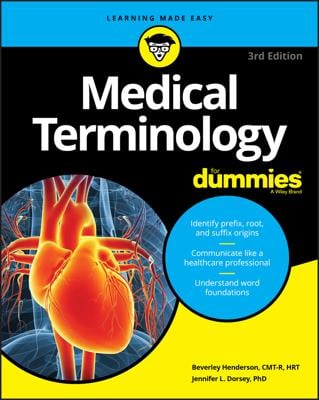How do medical professionals go about confirming their suspicions of a gastrointestinal problem? Well, you will need to be armed with the proper medical terminology. Let’s see what they can find out.
Gastrointestinal radiology and diagnostic tests
There are three primary ways physicians diagnose digestive diseases and conditions: X-rays, ultrasounds, and blood tests. Check out these x-ray methods:
Abdominal ultrasound: Most common method to determine the presence of stones in gallbladder, can detect liver cysts, abscesses, gallstones, enlarged pancreas
Anorectal manometry: To determine strength of muscles in rectum and anus, check for malformations, and to diagnose Hirschsprung’s disease
Barium enema(lower GI series): Series of x-rays taken of large intestine after the patient receives a barium enema
Cholangiogram: X-ray film of bile duct, contrast medium is injected to outline the ducts
Cholecystogram: X-ray of the gallbladder
Gastric emptying scan: To view the rate at which the stomach empties, the patient is given food with a radioisotope (low radioactive substance) that allows radiologist to see food going into stomach and how quickly it leaves the stomach
Upper GI series: Series of x-rays taken of stomach and duodenum after barium swallow or meal has been taken
A wide variety of blood tests can be done to diagnose gastrointestinal conditions and diseases. Some of the most common ones are as follows:
Alkaline phosphatase: An enzyme which, when elevated, can indicate liver disease, certain kinds of cancer, bone disease, or a number of other problems.
Amylase: Pancreatic enzyme levels elevated in disease of pancreas
Bilirubin levels: Present in liver and gallbladder disease
CBC (Complete blood count): Measures types and levels of white blood cells, red blood cells, and platelets, or clotting factors
CMP (Complete metabolic profile): Damaged organs release certain enzymes from their damaged tissue, and these elevated enzyme levels show up in the blood; nonfunctioning organs cannot clean waste products out of the blood the way they’re supposed to, and elevated levels of these products also show up in the blood; CMP in particular looks at electrolytes, liver function, and kidney function
Helicobacter pylori antibody test: Blood test to determine presence of H. pylori organisms, a bacteria that can be found in stomach lining, causing duodenal ulcer
Occult blood test: Test to detect occult (hidden) blood in feces; also called Hema-Check and Colo-Rec
Protein: Elevated in liver disease
Some diagnostic procedures are a bit more invasive, such as an abdominocentesis (also called paracentesis), a surgical puncture to remove fluid from abdominal cavity. Most of the other invasive procedures involve the use of an endoscope.
Almost every part of the digestive system can be viewed with the endoscope. The fiberoptic endoscope has glass fibers in a flexible tube that allows light to be transmitted back to the examiner. The endoscope can be inserted into a body opening or through a small skin incision to view internal organs.
Some endoscopic procedures include the following:
Colonoscopy: Visual examination of the colon using an instrument called a colonoscope
EGD (esophagogastroduodenoscopy): Visual examination of esophagus, stomach, and duodenum
ERCP: Also known as an endoscopic retrograde cholangiopancreatography, this involves an x-ray of bile and pancreatic ducts using contrast medium (like dye) and endoscopy
Gastroscopy: Visual examination of the stomach using an instrument called a gastroscope
Laparoscopy: Visual examination of any internal organ or cavity using an instrument called a laparoscope
Proctoscopy: Visual examination of the rectum using an instrument called a proctoscope
Sigmoidoscopy: Visual examination of the sigmoid colon using an instrument called a sigmoidoscope
Here a few more procedures that are now done without the need for the endoscope:
Capsule endoscopy: A capsule containing a camera is swallowed by the patient to take pictures along portions of the digestive tract not reachable by other procedures. How cool is that?!?
MRCP (Magnetic resonance cholangiopancreatography): Uses MRI technique to obtain images of the bile and pancreatic ducts.
Virtual colonoscopy: Computer takes CT images of the colon and reconstructs a 3D model of the colon, to evaluate abnormalities.
Gastrointestinal surgeries and procedures
Here are some of the most common gastrointestinal surgical methods:
Abdominoperineal resection: Surgical excision of colon and rectum, by both abdominal and perineal approach
Appendectomy: Surgical excision of appendix
Cholecystectomy: Surgical excision of gallbladder
Colectomy: Surgical excision of the colon or part of the colon
Gastrectomy: Surgical excision of stomach
LAGB (Laparoscopic adjustable gastric band): Inflatable device is placed around the top portion of the stomach to treat obesity
Polypectomy: Surgical excision of a polyp
Transplantations (pancreas and liver): Diseased pancreas or liver is removed or partially removed and replaced with a donor organ
Uvulectomy: Surgical excision of uvula
Surgical repairs are next on the to-do list of procedures and surgeries. Gastrointestinal surgical repairs include
Anastomosis: Surgical connection between two normally distinct structures
Anoplasty: Surgical repair of anus
Choledocholithotomy: Incision into common bile duct to remove stone
Laparotomy: Surgical incision into abdomen
Palatoplasty: Surgical repair of palate
Pyloroplasty: Surgical repair of pylorus
UPPP (uvulopalatopharyngoplasty): Surgical repair of uvula, palate, and pharynx to correct obstructive sleep apnea
Vagotomy: Cutting of certain branches of vagus nerve performed during gastric surgery to reduce amount of gastric acid
Finally, surgeons use suturing and the creation of artificial openings to help treat conditions of the gastrointestinal tract. These are some of the most common:
Colostomy: Artificial opening into the colon through abdominal wall
Gastrojejunostomy: Artificial opening between stomach and jejunum
Gastrostomy: Artificial opening into stomach through abdominal wall; this is a feeding method used when swallowing is not possible
Herniorrhaphy: Suture of a hernia to repair
Ileostomy: Creation of artificial opening into ileum through abdominal wall for passage of feces (used for Crohn’s disease, ulcerative colitis, or cancer)
Jejunostomy: Creation of artificial opening in the jejunum

